Utah Biographies ~ Hatch to Hubbard
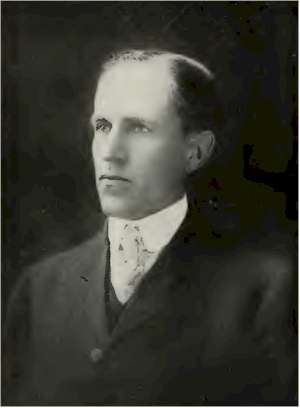
Hatch, Fred S.
Prominent in the affairs of one of the
chief industries of the State, few men are better known in
Western business circles than Fred S. Hatch. As general manager
of the Inter-mountain Packing Company of Salt Lake City, Utah,
he has a large acquaintance, not only among stock men, but in
the commercial world at large.
Mr. Hatch is a native of New York and was born at Portville,
that State, December 24, 1869. He is a son of George Y. Hatch, a
farmer, born at Farmersville, New York, and Livera A. Stevens
Hatch of Geneseo, New York.
Mr. Hatch was educated at Portville Academy and at Westbrook
College, Olean, N. Y., where he graduated in 1889. After leaving
school he became a bookkeeper for J. S. Bishop & Son, Olean, N.
Y., and afterwards became connected with W. H. Granger &
Company, whole-sale grocers at Buffalo, N. Y. While employed
with this firm, his business ability attracted the attention of
F. B. Keeney, a large dealer in hay and grain, who secured the
services of Mr. Hatch as his purchasing agent at Belvidere, N.
Y. Mr. Hatch held this position for five years, until 1894, when
he purchased a farm in Wyoming County from Mr. Keeney. His next
venture was in the mercantile business in Eden, Erie County, N.
Y., where he continued until 1898. In this year he removed to
Olean, N. Y., where he was in business until April 12, 1902.
Entering the employ of Armour & Co. as a salesman, in 1902, he
rose rapidly in the estimation of the firm, and in July, 1903,
was placed in charge of the extensive interests of the Armours
at Boise, Idaho. Here he remained until 1905, when he was
transferred to Portland, Oregon, and placed in charge of the
branch there. His next move was to Butte, Mont., where he
remained until 1906, when at his own request he was sent to Salt
Lake City as manager of the Armour interests. He held this
position until August, 1907, when he was placed in charge of the
house at Oakland, Cal., remaining there until August 1, 1908, at
which time he returned to Salt Lake City. In December of the
same year, the Inter-Mountain Packing Company, a Utah
corporation, seeking for a man of thorough business and
executive ability was fortunate in securing the services of Mr.
Hatch as general manager, which position he holds at the present
time.
Organized in the fall of 1905 as the Utah Packing Company, the 1
Inter-Mountain Packing Company is purely a home industry, the
officers of which include some of the State's most progressive
capitalists. Its officers when the company assumed its present
title were: James A. Eldredge, president; D. L. Evans,
vice-president; C. R. Long, secretary; W. S. McCornick,
treasurer, and F. A. Danielson, manager.
The present officers are: James A. Eldredge of Bountiful, Utah,
president; D. L. Evans, Malad, Ida., vice-president; W. S.
McCornick, Salt Lake, treasurer; O. O. Whitney, Salt Lake,
secretary; F. S. Hatch', general manager. The directors are
James A. Eldredge, D. L. Evans, James H. Moyle, J. C. Leary,
George C. Crawford, William Mclntyre, Samuel Mclntyre, George C.
Whitmore and W. S. McCornick.
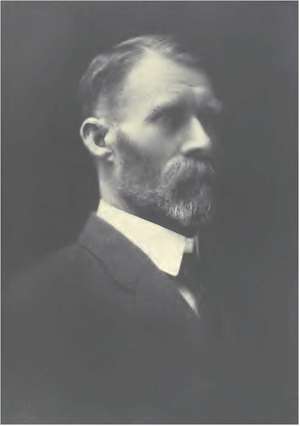
Headlund, John A.
Salt Lake City at the present time is
one of the busiest cities in the United States, and the building
interests are contributing more to the welfare and fame of that
magnificent city than any other department of progress.
Active in all movements to increase the general prosperity, they
have kept pace with the most rapid strides in their own line,
while at the same time participating in the general advancement
of the community.
John A. Headlund, one of the most successful architects in Utah,
was born in Engelholm, Sweden, May 30, 1863, and there received
his early education in the public and high schools. He came to
this country thirty years ago, and first settled in. Kansas
City, Missouri, securing employment with the Hannibal and St.
Joseph Railroad, doing general work in the engineering
department. He next went to Colorado Springs, Colorado, under
employ of Van Brunt & Howe, architects, as superintendent for
said firm. He was also superintendent of the late W. S.
Stratton's building enterprises, and soon won distinction for
himself and for his work. In 1889 Mr. Headlund came to Salt Lake
City for a short time and returned. In 1891 he went into the
profession of architecture exclusively, and has ever since been
very successful.
He surrounded himself with a competent force of assistants, and
has been instrumental in erecting many of the most important
business blocks, private dwellings, and imposing structures of
Salt Lake City. His work includes the McDonald Candy Company's
plant, L. & A. Simon Block, First Baptist and Third Presbyterian
churches, the Young Men's Christian Association Building, the
remodeling of the Scott Building, the S. B. Milner residence,
Dr. E. H. Woodruff's residence, and others, and most of the
large school buildings throughout the county, Park City and
Heber City, and also a school in Idaho. Mr. Headlund has always
had a natural inclination for geometrical design-ing and
carving, and has received instructions from some of the best
masters in the world. He began when he was fifteen years of age,
and his natural aptitude has doubtless been the cause of his
success. Mr. Headlund was married in 1891, at Colorado Springs,
and is the father of three boys, Wallace, Colin Frazer, and
Morris Andrew.
Mr. Headlund is interested in numerous mining companies in Utah
and Nevada, also industrial companies in the East and West. He
has never held any political office, and has no aspirations in
this connection. Mr. Headlund has built about four hundred
buildings in Utah, Idaho, Nevada and Wyoming.
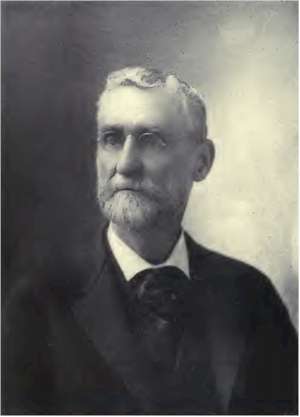
Hill, Lewis Samuel
Lewis S. Hills was born March 8, 1836,
at South Amherst, Massachusetts. He is a son of Lewis Hills, a
farmer, and of Rhoda Thayer Hills. Mr. Hills was educated in the
public and high schools of Spring-field, Massachusetts, and came
to Salt Lake City, July 27th, 1862.
On May 1, 1869, associated with the late Capt. Wm. H. Hooper and
the late Horace S. Eldredge, he started the private bank of
Hooper, Eldredge & Co., with $40,000 capital. This firm was
incorporated under the National Bank Act, in 1872, as the
Deseret National Bank, and Mr. Hills became cashier, occupying
that position until January, 1892, when he became president, and
has occupied that office since that date.
The name of Lewis S. Hills is an honored and respected one
through-out the entire inter-mountain region. No man has been
more conscientious and honest in his endeavors to build up this
beautiful country, nor has any one man accomplished more to that
end, than has Mr. Hills. As president of one of the strongest
financial institutions in the Western country, the Deseret
National Bank, he has for a period of years come in contact with
and been financial adviser of countless thousands of persons who
have reason to feel indebted to him for his assistance and
kindly suggestions as to their welfare. In depression, as well
as in good times, Mr. Hills has always been found to be a
guiding spirit for many who might have failed but for his good
offices and sound advice and judgment. Mr. Hills has many and
diversified interests, as he is also a director of the Deseret
Savings Bank; the Zion's Co-operative Mercantile Institution;
the Consolidated Wagon and Machine Company; the Home Fire
Insurance Company; Beneficial Life Insurance Company; the Utah
Fire Clay Company; the Nephi Plaster Company; the First National
Bank of Ogden; First National Bank of Murray; Nephi National
Bank; Thatcher Brothers' Bank of Logan; Davis County Bank,
Farmington; Barnes Banking Company, Kaysville; shareholder in
the Oregon Lumber Company, Amalgamated Sugar Company, Utah-Idaho
Sugar Company, First National Bank of Montpelier, Ltd., Wells
Fargo Express Company, San Francisco, Southern Trust Company of
Los Angeles, Evanston National Bank, Manti City Savings Bank
Company.
Mr. Hills has held the office of registrar of the United States
Land Office at Council Bluffs, Iowa; was the first receiver of
United States Land Office at Salt Lake City; served two terms in
the city council of Salt Lake City; and treasurer of the
University of Utah and several corporations with which he was
connected. He is a member of the Alta Club, Automobile Club of
Salt Lake City, Reform Club of New York City, and Free Trade
League of Boston, Massachusetts.
Mr. Hills was married to Theresa Burton, October 17, 1866, and
to them have been born six children; namely, Lewis B., Maria T.,
Edgar S., Eugene R., Herbert T. (deceased), and Harold H. Mr.
Hills resides at 425 East First South Street, Salt Lake City.
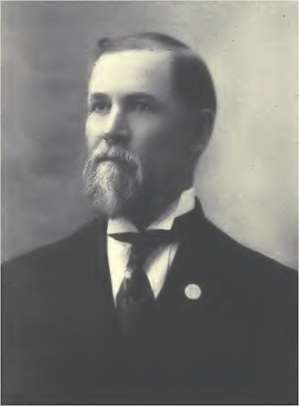
Holbrook, Lafayett E.
Among the most prominent of Utahans is
Lafayette Holbrook of Provo, who was twice mayor of that city,
serving from 1893 to 1897.
Mr. Holbrook is a native of Utah, born in Salt Lake City,
September 7, 1850. His ancestors were early New Englanders, his
grandfather, Moses Holbrook, being a native of the Bay State,
born in Sturbridge in 1779. His father, Chandler Holbrook, who
was an engineer, and his mother, Eunice Dunning, were born in
New York and were pioneers of Utah. They resided in Salt Lake
City until 1852. When Lafayette Holbrook was two years old they
removed to Fillmore, where the subject of this sketch resided
until 1880.
During his residence in Fillmore he engaged in farming and
stock-raising, particularly the latter. In 1871 he purchased
cattle in the region around Abilene, Kansas, and drove them to
Utah, and in 1873 he visited Texas, where he purchased cattle
and drove them also through to Utah.
In October, 1873, Mr. Holbrook went to Europe. During his
sojourn there he visited France, but spent most of his time in
the British Isles, returning to Utah in 1875. In 1876 he was, on
October 9th, married to Emily A. Hinckley. Ten children were
born to them, seven of whom are living. They are: Lafayette H.,
Jean Clara, Eunice A., Ora L., Florence L., Ruth and Lincoln
Holbrook. Those dead are Emmet G., Ava Luvile and Lillian M.
In 1877 Mr. Holbrook was elected assessor and collector of
Millard County, which office he held four years. In December,
1880, he removed from Fillmore, going to Frisco, in Beaver
County, where he for seven years engaged in merchandising and
mining. He has retained his interest in a number of mining and
industrial companies which he developed and built up, both in
Utah and in other States. He is an official in many of these and
manager of several.
In 1890 Mr. Holbrook removed from Fillmore to Provo, where he
still resides. He was proprietor for seven years of the Roberts
House, one of the best known hostelries in Utah. He has aided in
the development of many Utah County enterprises.
In 1896 Mr. Holbrook was the Republican nominee for congressman,
but with his party was defeated, due to the battle waged for
silver in the State.
His oldest son, Lafayette H., has spent three and one-half years
abroad, going around the world, departing from Vancouver,
British Columbia, and returning via New York. While on his tour
he visited many of the islands of the Pacific, Australia, the
Holy Land and many other places in the old world. His three
eldest daughters, Jean Clara, Eunice A., and Ora L., have
visited Europe, Jean Clara remaining there for two years.
Mr. Holbrook has ever been alive to the moral and material
interests of the communities in which he has resided.
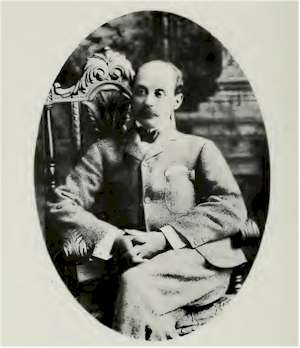
Holmes, Gustavus S.
G. S. Holmes came to Salt Lake City
because he had faith in the city, and because he had faith in
its future. He came from Cincinnati to Denver for his health;
went from there to Colorado Springs. Soon after he took up a
ranch where Cripple Creek now stands. He rode the range for four
years, and was captain of the round-up, where he recovered his
health. Then he knew that his mission was to be a Boniface, to
keep a hotel, all of his ancestors having been hotel-keepers. He
sold out in Colorado, came to Salt Lake, became a landlord, is
still a Salt-Laker, is still a landlord, and the head of one of
the best hotels in the country, the Knutsford.
Mr. Holmes has passed through many vicissitudes during his
residence in Salt Lake. He came here with men connected with the
building of the Colorado Midland Railroad. All took options on
and bought blocks of vacant land. In 1889 the others sold at a
great advance. Mr. Holmes held his on account of prospects. He
held on when the boom collapsed, and got caught in the panic of
1893, owing over $200,000. He had taken up the Knutsford Hotel
scheme as an east side project when others on the west side were
endeavoring to build the Ontario, which was to be a million
dollar hotel, but the west side enterprise never got beyond the
foundation. The present Commercial Club build-ing stands on the
Ontario site. The ground where the Knutsford stands was
purchased by Messrs. Holmes, Ricketts, and others, for $85,000,
and donated to the men who erected the Knutsford. Mr. Holmes
then leased the hotel and expended $150,000 in furnishing it. He
is still the owner.
He has been successful in business affairs and can safely figure
his wealth by seven figures. It is estimated that he is the
fifth or sixth largest tax-payer in Salt Lake County, and one of
the few who never lost hope or faith in the city's future, and
is still buying and improving property. He is liberal to a
fault, is engaged in various enterprises, and is always awake to
every interest of importance. He is a member of the clubs and of
nearly all if not every secret organization; and interested in
the National Bank of the Republic and various mines. He has
traveled extensively, and is known by more people and knows more
people, perhaps, than any other man in the West.
He is a self-made man and is hopeful of living to see Salt Lake
City occupy her proper position as one of the four great
commercial cities west of Chicago. He is a native of Ohio, born
at Lynchburg. He was educated in the Hughes High School in
Cincinnati, the school that President Taft attended and one of
the same years. He has four children, two sons and two
daughters.
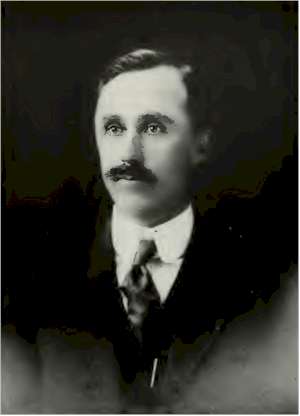
Hubbard, William E.
William E. Hubbard, the energetic
manager and treasurer of the Hubbard Investment Company of Salt
Lake City, belongs to that type of the successful men who make
and up-build communities. And it is due to men of the character
and ability possessed by Mr. Hubbard that such rapid strides in
real estate and building are made.
Of English descent on the paternal
side, Mr. Hubbard is a son of Solomon and Mary Hubbard, and was
born at Nora, Illinois, October 21, 1862. His mother was a
native of Indiana. Young Hubbard was sent to school at an early
age, and subsequently attended Earlham College at Richmond,
Indiana, and later the Rush Medical College at Chicago,
Illinois. It was his intention to follow the medical profession,
but his natural inclination turned to real estate, perhaps
imbibing his preference in that direction from having given his
earlier attention to farming. Later on he added mining to his
life work, and in both mining and real estate he has been very
successful. His mining operations have been quite extensive, but
chiefly confined to Bingham, Ophir, and Tintic districts; while
Salt Lake City has been his real estate field of activity.
Mr. Hubbard is an up-to-date hustling
man of affairs, and besides being manager and treasurer of the
Hubbard Investment Company, he is a director in the Lion Hill
Consolidated Mining Company, the Bingham Central Standard
Company, president of the Bingham-Butte Consolidated Mining
Company, vice-president of the West Temple Realty Company,
president of the Salt Lake Realty Owners' Company, and is
interested in numerous other business enterprises of importance.
Mr. Hubbard is a member of the
Commercial Club, B. P. 0. E., the Knights of Pythias, the
Masonic Fraternity, and the Mystic Shriners. He is one of the
most active members of the Real Estate Association, and is
considered an expert on anything pertaining to real estate and
investment, of which he has made a study for years. His advice
is often asked in extensive real estate deals, and his judgment
is unerring. He is an enthusiastic advocate of Salt Lake realty,
a believer in the prosperous future of the city, for the
promotion of which he is always working faithfully and
conscientiously. He is regarded as one of the best-informed men
on ground and structure values in Salt Lake City, and he is also
a prominent factor in mining circles.

Index

Source: Sketches of the Inter-Mountain
States, Utah, Idaho and Nevada, Published by The Salt Lake
Tribune, Salt Lake City, Utah, 1909
|

